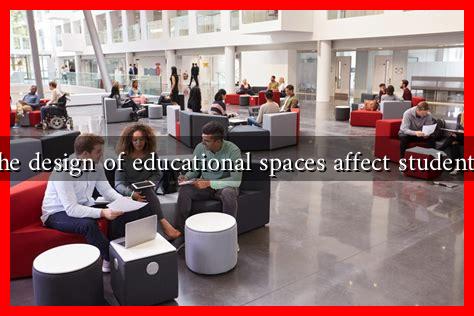-
Table of Contents
Does the Design of Educational Spaces Affect Student Health?
The design of educational spaces plays a crucial role in shaping the learning experience and overall well-being of students. As schools and universities evolve, understanding the impact of physical environments on student health has become increasingly important. This article explores how various aspects of educational space design influence student health, supported by research, case studies, and statistics.
The Connection Between Environment and Health
Research has consistently shown that the physical environment can significantly affect health outcomes. In educational settings, factors such as lighting, air quality, acoustics, and spatial layout can influence not only academic performance but also physical and mental health. Here are some key areas where design impacts student health:
- Air Quality: Poor ventilation and indoor air pollutants can lead to respiratory issues and decreased cognitive function. A study by the Environmental Protection Agency found that students in well-ventilated classrooms performed better on tests than those in poorly ventilated spaces.
- Natural Light: Access to natural light has been linked to improved mood and concentration. A study published in the journal Health & Place found that students in classrooms with ample daylight reported higher levels of satisfaction and lower levels of stress.
- Noise Levels: Excessive noise can hinder learning and increase stress levels. Research from the National Institutes of Health indicates that students in quieter environments perform better academically and experience lower anxiety levels.
Case Studies: Successful Educational Space Designs
Several educational institutions have recognized the importance of design in promoting student health and have implemented innovative solutions. Here are a few notable examples:
- Green School, Bali: This school is designed with sustainability in mind, featuring bamboo structures, natural ventilation, and abundant greenery. The environment fosters a sense of well-being and connection to nature, which has been shown to enhance mental health.
- High Tech High, San Diego: This project-based learning school emphasizes flexible spaces that encourage collaboration. The open design allows for natural light and reduces noise, creating a healthier learning environment.
- University of Virginia’s New Academic Building: This facility incorporates large windows for natural light, green roofs, and energy-efficient systems. The design promotes both physical health through active design principles and mental well-being through aesthetically pleasing spaces.
Statistics Highlighting the Impact of Design
Quantitative data further underscores the importance of educational space design on student health:
- A study by the National Association of Industrial and Office Properties found that students in well-designed classrooms scored up to 20% higher on standardized tests.
- According to the WELL Building Institute, schools that prioritize health and wellness in their design see a 15% increase in student attendance rates.
- Research from the Centers for Disease Control and Prevention indicates that students who feel safe and comfortable in their learning environments are more likely to engage in academic activities.
Conclusion: The Future of Educational Space Design
As we continue to understand the profound impact of educational space design on student health, it becomes clear that thoughtful planning and investment in these environments are essential. Schools and universities must prioritize features that promote air quality, natural light, and acoustic comfort to foster healthier learning experiences. By doing so, they not only enhance academic performance but also contribute to the overall well-being of students. The future of education lies in creating spaces that nurture both the mind and body, ensuring that students thrive in every aspect of their lives.


